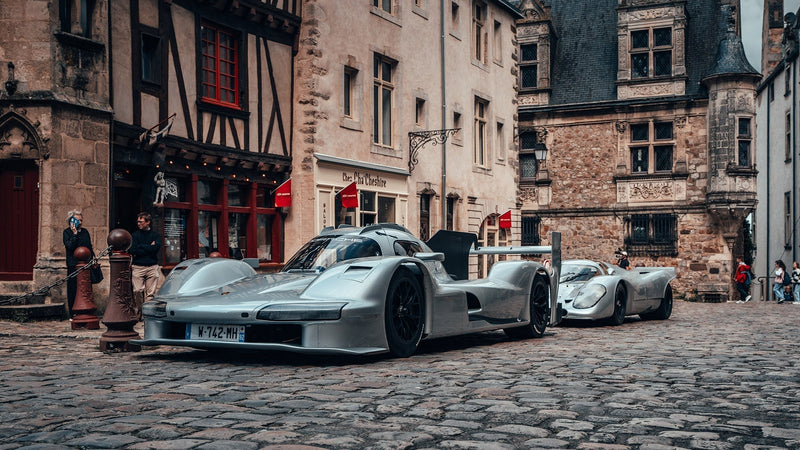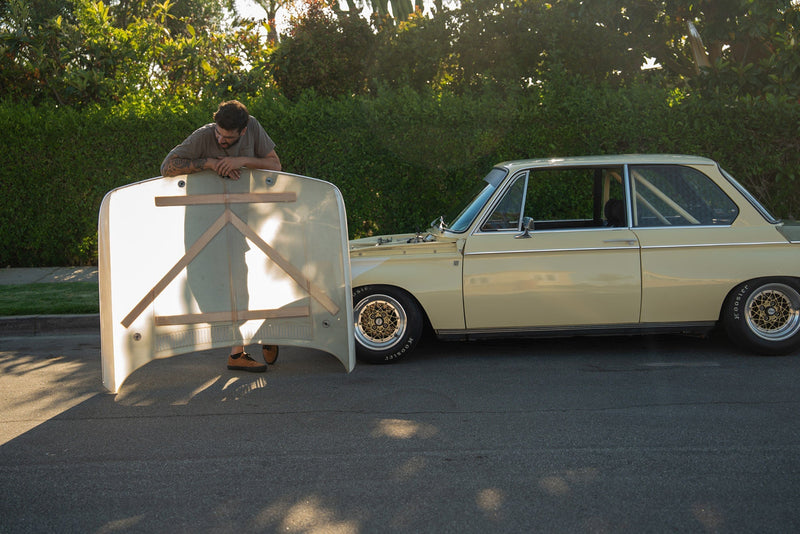The Amilcar marque didn’t last past the Second World War, and when we look back at the great motorsport achievements of the French from around that time we typically land on Talbot, Delahaye, Delage, and of course Bugatti first. The Grand Prix and endurance racing successes tied to these names are numerous and prestigious, but it would be hard to find any examples of these cars that can match the joys that were—and still are—provided by this Amilcar Pégase G36.
Just before the war put the big pause on motor racing, this special competition-prepared Pégase was driven by Fernande Roux and her teammate Germaine Rouault at Le Mans in 1938. The car didn’t make it the full 24 hours, but the friends completed more than 100 laps of the famed circuit before mechanical troubles took them out of it, outdriving many a male team in the process. After the war, Mrs. Roux took ownership of the Pégase from her husband and continued to compete with it in circuit races and road rallies along the French coast.




It was thoroughly enjoyed during this time (having the Nazis leave town certainly didn’t ruin the mood in the country), and though she took matters behind the wheel seriously (she won the all-women Paris-Vichy-Raphael route in this car), she wasn’t above a little bit of indulgence too—namely, having her dog Mowgli ride along with her in the passenger seat. As the current caretaker succinctly puts it, “it was a different time.”
Michel Lempidakis is the proud owner of the car today, and though he has more significant and higher-performing machines at his disposal from his collection, he is enamored with the story of this particular Pégase, and ensures that it stays well exercised between classic races and good old drives in the countryside. It’s not just the act of driving that he enjoys though, but the human connections that inevitably come with something this unique, whether that be a connection to its past drivers, or to the people he meets along the way as he adds his own history to the car: “I think automobiles have a real social aspect to them. Whenever we make our way into a village, or one of the forgotten little corners of the world, people are always happy to see us. Always a thumbs up and a big smile. And people love to tell us stories. It’s very rewarding to see that enthusiasm, because having a car is about more than just getting around.”






Which is kind of funny when one considers the origins of Amilcar vehicles as very practical and economical ways of getting around. Joseph Lamy and Emile Akar started Amilcar in 1921, with the brand’s first efforts being in the cyclecar market. These were cars that enjoyed lower taxation if they could adhere to the government’s limits on weight (less than 350kg), engine size (less than 1100cc), and passenger capacity (no more than two), and as such, they were never really on the cutting edge in terms of outright performance. Amilcar still managed to make some sport variants however, and became involved in motorsport just a few years after they produced their first civilian cyclecars.



By the end of the 1920s, Amilcar was producing cyclecars and larger, more powerful cars that no longer fit into the segment the company had started in. They even got into the business of making a few purpose-built race cars, like this Pégase G36. Michel says the car was nothing revolutionary for its time, but still quite special thanks to the considerations given to it for competition. It featured many of the day’s best practices, like using aluminum to keep the weight down to around 1,650lbs, aeronautical-inspired bodywork, and the ability to reconfigure parts of the car—like lights and windscreens and fenders—in order to comply with different tracks’ and series’ requirements.
The inline-four under the hood didn’t have an overhead cam like some of the Pégase’s contemporaries, but it was still a hale little mill that produced around 85hp and could get the thing just over the 100-mph cusp in terms of top speed. Because it was primarily to be used for endurance races like Le Mans and long rallies, two fuel tanks were fitted (one in the back, one in the front). It also had a Lockheed-developed hydraulic braking system, which Michel says was the most advanced aspect of the vehicle when stacked up against its peers.


Today, Michel is delighted to call himself the owner of this rare and relatively unknown machine, and it’s been a long time coming. “It took me more than 20 years of dreaming to get this car, and when finally did, there was nothing like it.” He is content to look at it in his garage, replaying its past lives in his head, but he’s not afraid to drive it either.
Drive Tastefully®























































